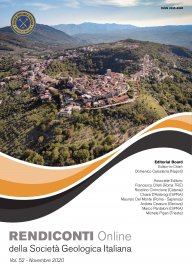
Integration of satellite, UAV and field data for soil analysis in precision viticulture
Alessandro Mei (1), Giuliano Fontinovo (1), Elena Rantica (1) & Alessia Allegrini (1)
(1) CNR-Institute of Atmospheric Pollution Research, Area della Ricerca di Roma 1, Via Salaria Km 29,300 Monterotondo St., 00015 Rome, Italy.
Corresponding author e-mail: mei@iia.cnr.it
Volume: 52/2020
Pages: 33-39
Abstract
In precision viticulture, the knowledge of the spatial distribution of soil characteristics is necessary to optimize the agro-cultural practices. In this work a multi-parametric approach, based on different satellite sensors and Unmanned Aerial Vehicle (UAV), is evaluate to detect areas with similar soils characteristics. The Misra Soil Brightness Index (MSBI) and the Normalized Difference Vegetation Index (NDVI) spectral indices are extracted from Sentinel-2 imagery for main distribution of soil and of vegetation characteristics. COmbined Spectral Response Index (COSRI) and Soil Background Line (SBL) spectral indices are calculated from Pléiades data for a more accurate delimitation of soil homogenous areas. Digital Elevation Model, Ortophoto and slope maps retrieval of UAV data are also included within a Geographical Iinformation System for morphological analysis. The analysis of such different thematic layers allow to set up a dedicated and specific grid for soil sampling on each analysed vineyard unit. Finally, spectroradiometric and chemical (Electric Conductivity and pH) laboratory measurements of sampled soils allow to obtain the Normalized Differential Salinity Index (NDSI) and EC map. In accordance with satellite analysis, such analysis delimit soil heterogeneity spatial distribution highlighting areas potentially subjected to salinity stress and, consequently, to a different grapes production and maturity trend.
Keywords
Get Full Text